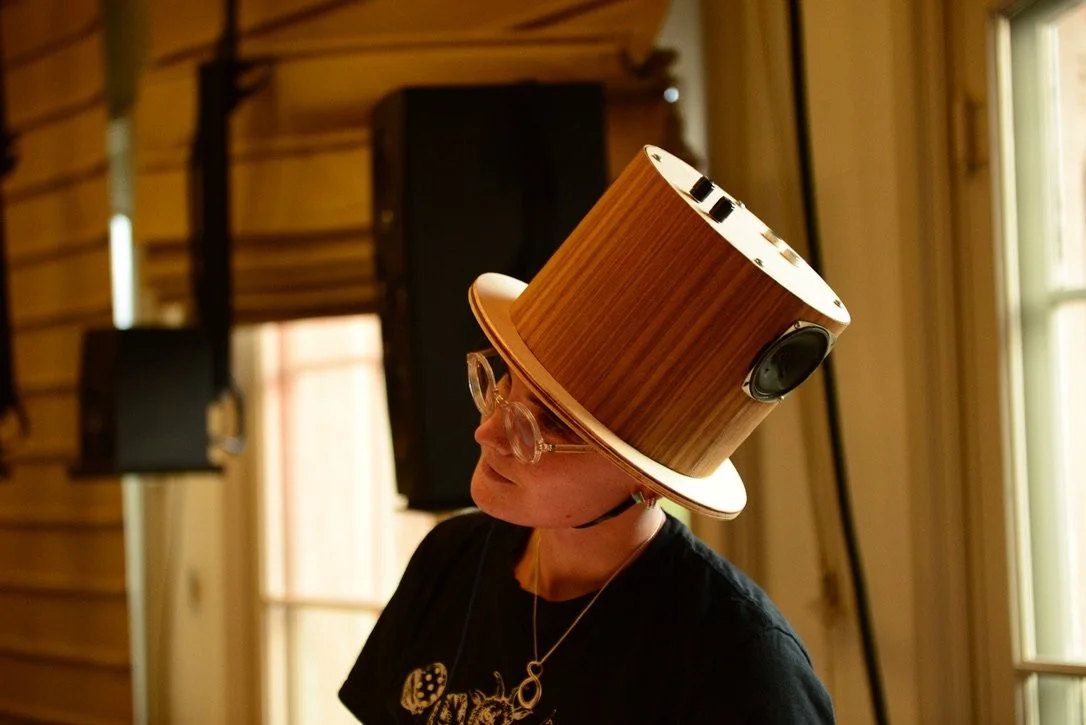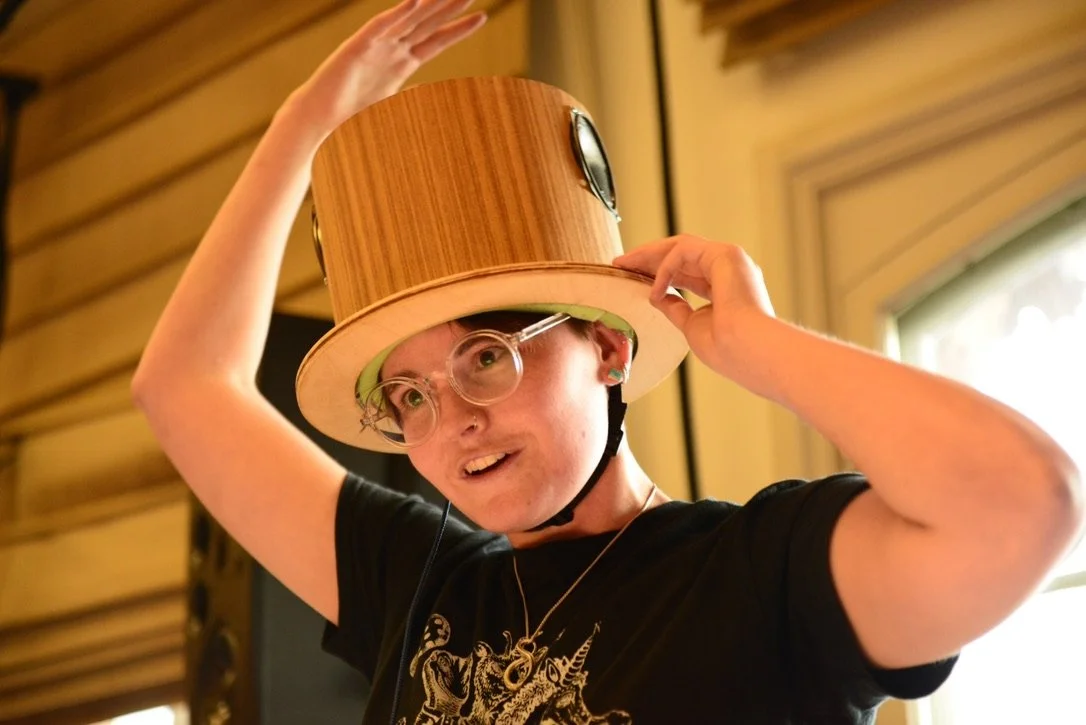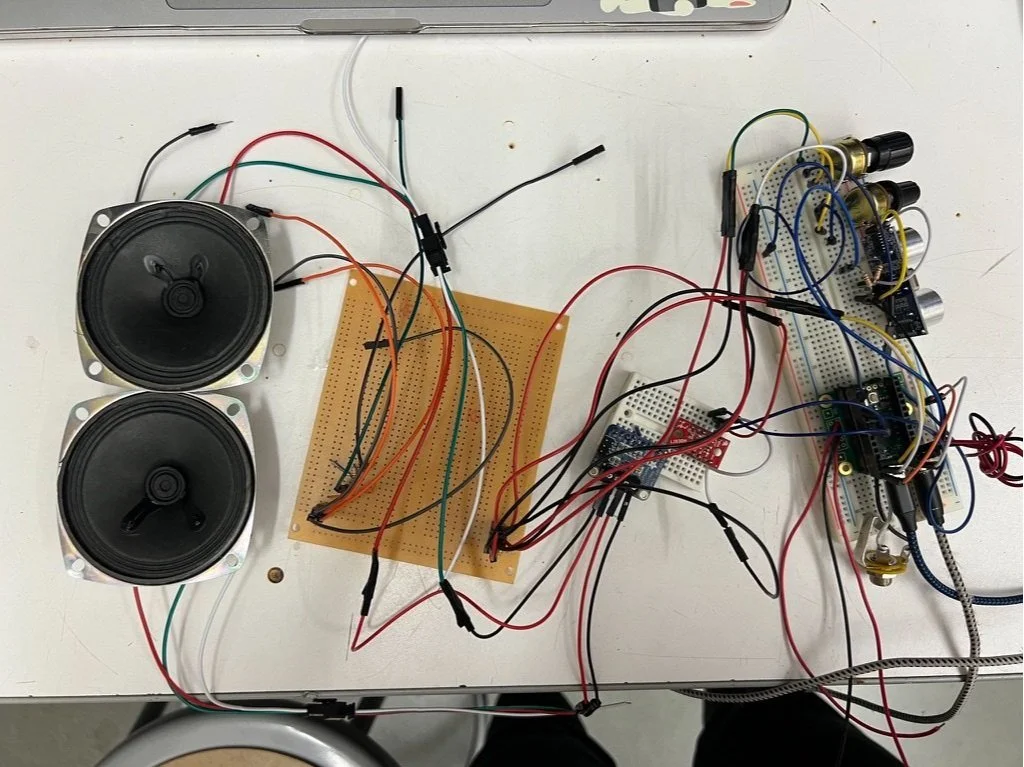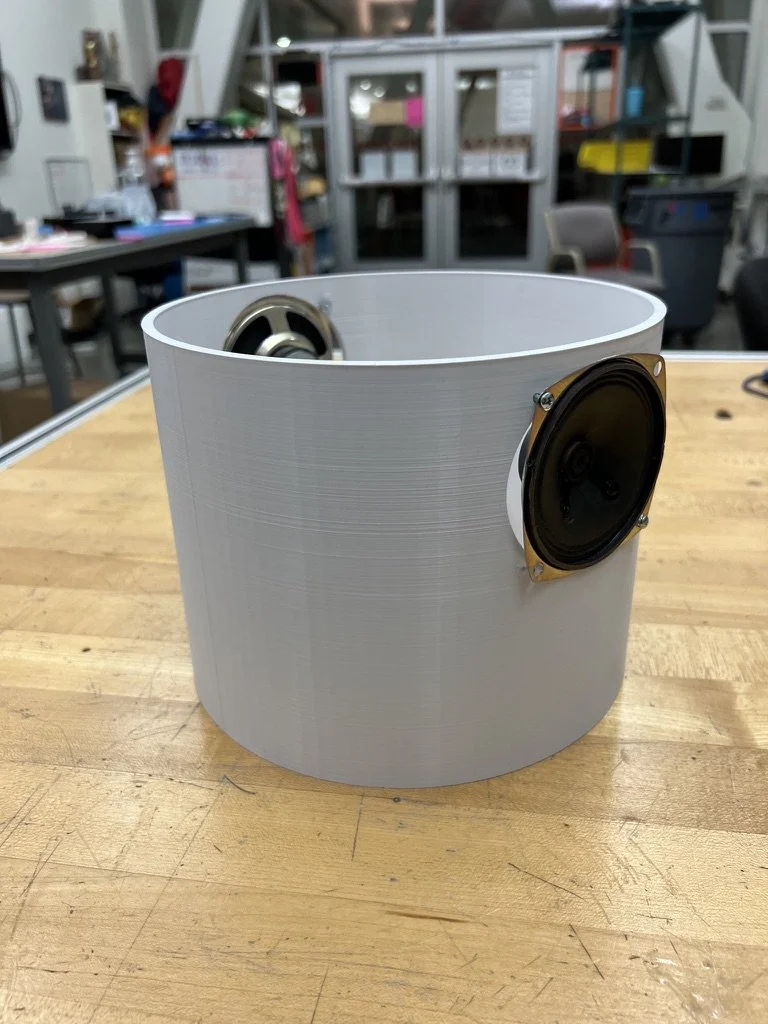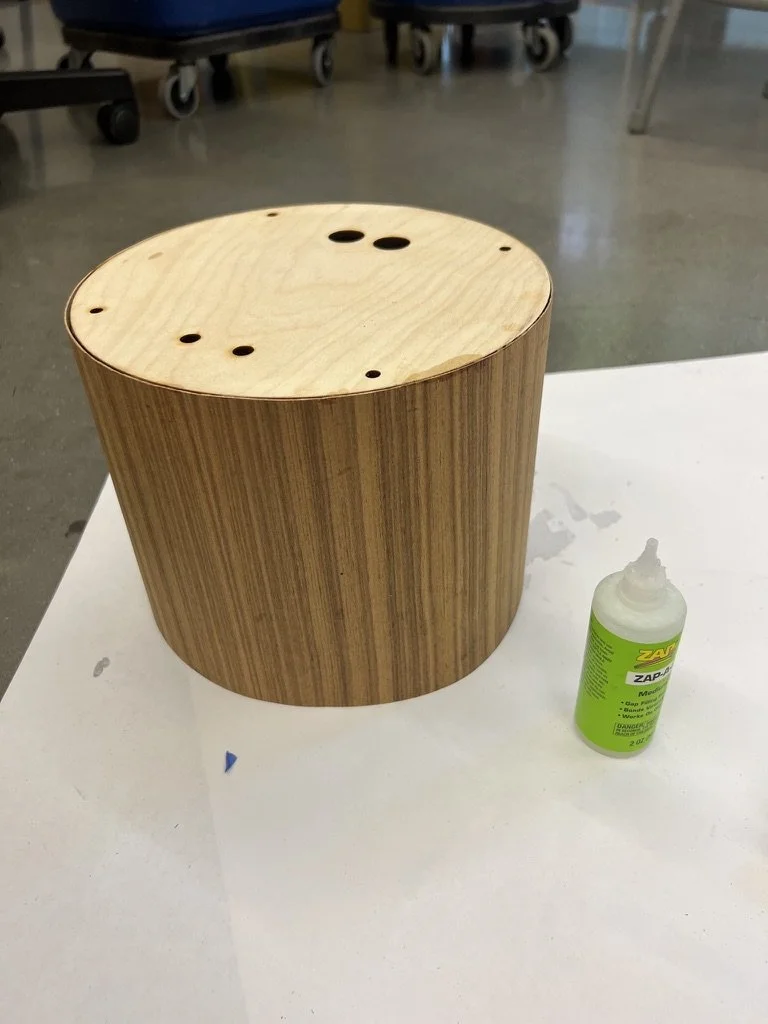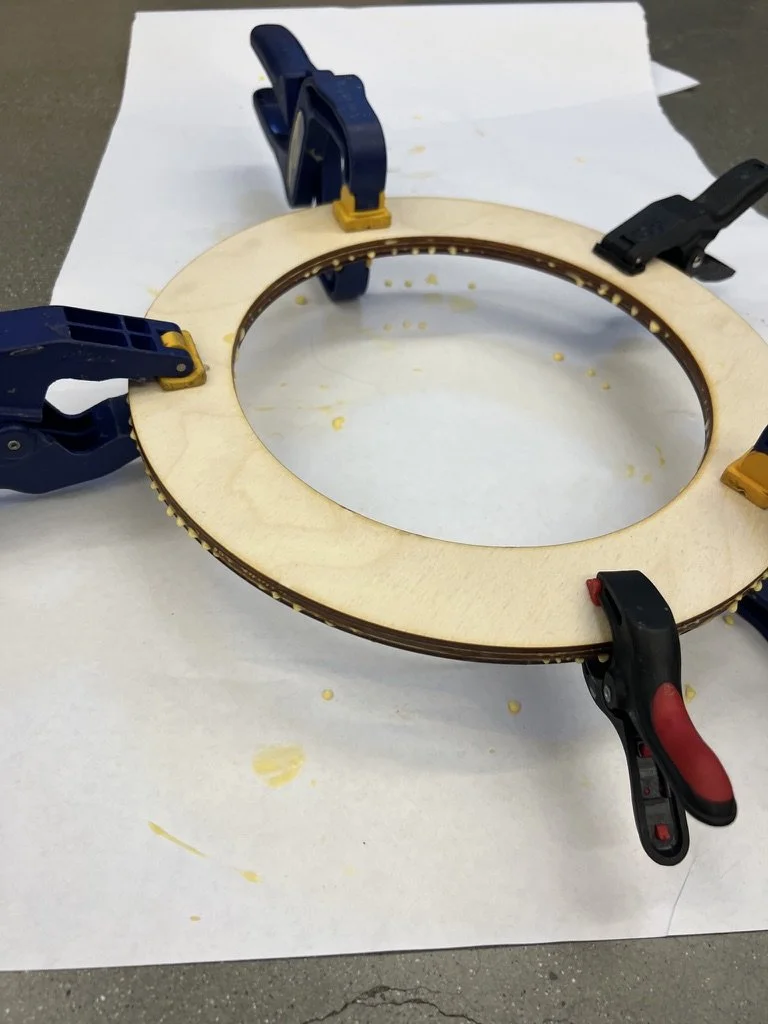This is my final project for music 250A, called gentleman. It is a top hat made of wood and 3D printed internal supports. The goal of the instrument is to encourage the user to explore motion, so the music becomes more interesting as the user moves. The instrument is powered by a Teensy 4.1, with an Audio Shield that connects various sensors to control parameters in Arduino. The musical pieces are generated using a Digital Signal Processing language called Faust, where I created the different waves that create the music.
The frequency, amplitude, shape, envelope, etc. of the waves all factor into how the music is heard. As someone who is new to DSP, I wanted to focus on understanding how music is generated from a purely wave-generation perspective.
Gentleman
Brief: Create musical instrument using digital digital processing processing (DSP)
Processes: DSP (Faust), electronics, arduino, 3D printing
Duration: 8 weeks
Context: Individual project for Music 250A: Physical Interaction Design for Music
Electronics
Since the Teensy has limited capacity, many common filters and effects, like delay and reverb, overload the Teensy. It was an exciting challenge to focus purely on wave generation to create interesting sounds, despite the limitations of the microcontroller. In order to make this instrument self-contained, I wanted the sound to come out of the hat itself. As such, I learned how to wire up speakers and integrate them into my circuit. In order to keep the hat relatively lightweight, I used 3” diameter speakers, which are limited in volume to 18dB. When wearing the hat itself, the sound is certainly loud enough. However, when presenting to a large room, the sound is not quite loud enough.
Enclosure Design
Some early exploration of this project included 3D printing an insert to connect to the top of the top hat. This enclosure would hold the circuits and create a hemispherical location for the user to place their head. Later, the cylindrical body of the hat was also 3D printed out of white PLA, with openings for the speakers. The top of the hat and the brim were laser cut out of birch plywood. The top and bottom were glued to the body, and the body was wrapped with a veneer to complete the look. Nylon straps with buckles were looped through the insert, and the circuit was attached to the inside of the insert for stability. Once secured, the insert was screwed into the top and the speakers were mounted.
Melody design
There are three main melodies. The first is controlled by an accelerometer. On the Faust side, the melody is 9 sine waves of the G minor pentatonic scale in parallel. When not moving, only one oscillator is heard. As you move your head in X, the number of voices increases. The sound of each oscillator is randomly triggered. When moving your head forwards and backwards, the duration that each sound is held changes. As a result, when moving your head in a full circle, the number of voices, the frequency, and duration of the sounds changes dynamically. The other two melodies are controlled by two potentiometers on top of the hat. The first is an oscillator with a vibrato that is controlled by an LFO (low frequency oscillator), meaning that the gravity of the vibrato changes cyclically. The second is a chord, which is created by three sawtooth oscillators in parallel, offset by their relative notes. The “third” of this chord is triggered by the ultrasonic sensor, so moving your hand closer to the sensor will increase the third.


